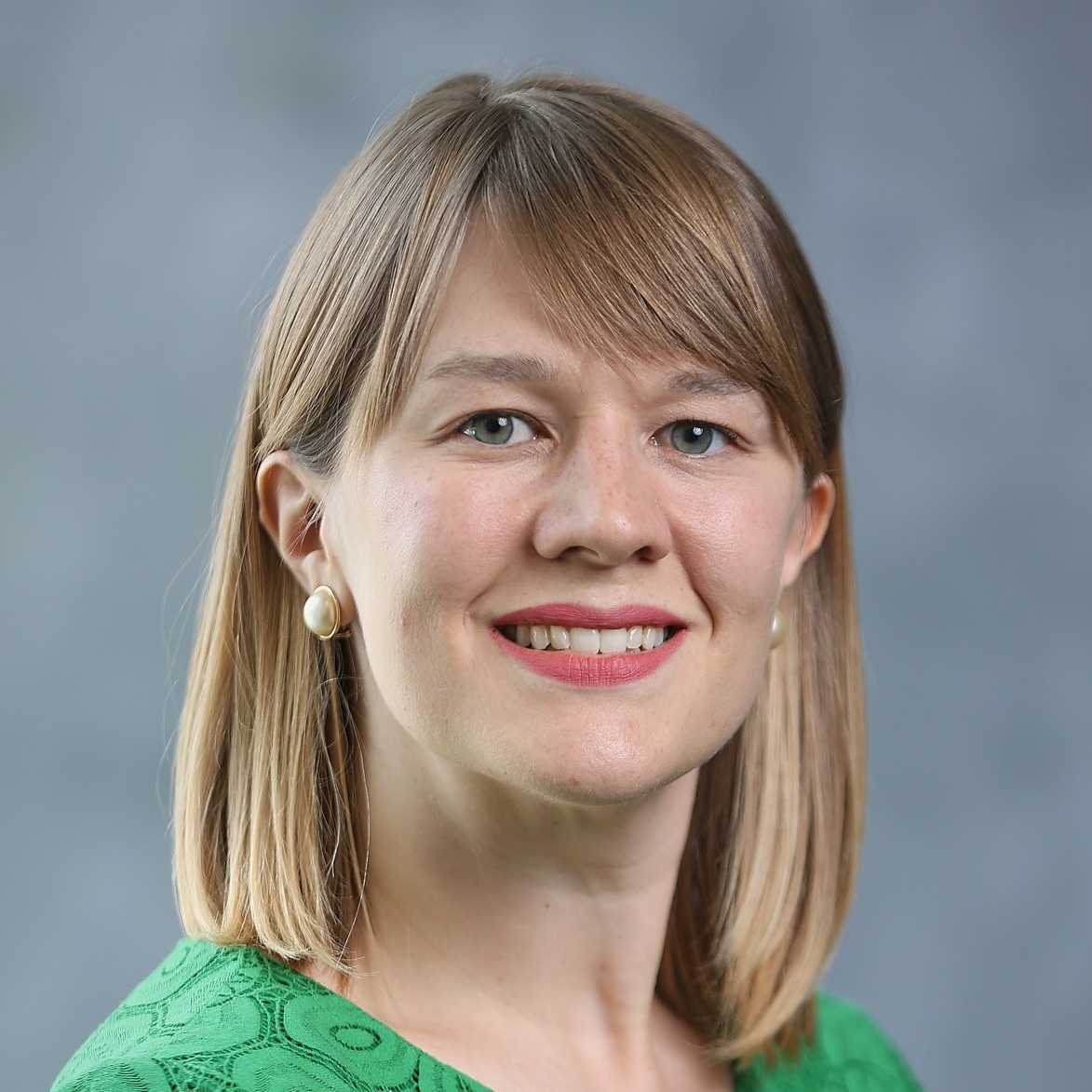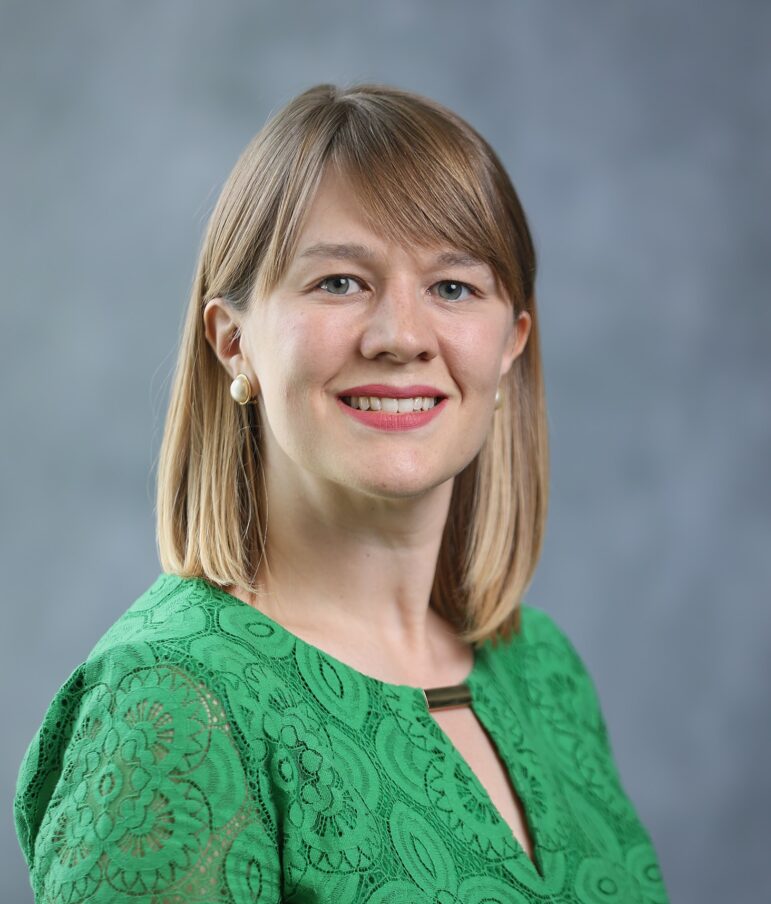Clare Roth

Managing editor
The Ohio Newsroom
Age: 32

In three words: Connector, empathetic, visionary
What colleagues say: Clare was essential in making The Ohio Newsroom a critical news source connecting communities across the state. She built this newsroom from the ground up. Clare fosters cooperation between historically independent public media and shows how collaborative reporting works throughout the state. TON gives voice to locals and plugs gaps in coverage by other media. Her staff produces compelling journalism each weekday, stories that enrich Ohio’s public media and restore the joy of listening by adding depth, humanity and a fresh perspective to listeners weary of the daily news cycle.
What Clare says
Decision to work in public media: After a college professor told me I had a good voice and should look into radio, I emailed every radio station with a news operation in my hometown. Iowa Public Radio was the only one to get back to me. During a summer under the mentorship of some amazing journalists, I fell in love with the grounded contextual style of public media journalism and how it’s always centered on the humanity of its subjects. After I graduated, IPR hired me as a talk show producer. I was off to the races.
Key accomplishments: Conceiving of and building our flagship program Today from The Ohio Newsroom. As the founding editor of a new statewide collaboration, I was tasked with making an entirely new news product from scratch. It had to fit comfortably on each of our stations, cover the state’s news deserts with just two reporters and come out five days a week, 52 weeks a year.
I approached its creation as an extended reporting project, interviewing journalists and general managers, assessing the current journalistic landscape and gathering intel from other public radio collaborations. I commissioned theme music, determined reporter workflows and content distribution, and developed five pillars that would guide our journalism.
It all worked. That we are still fulfilling our mission every week nearly two years later, that stations are proud to air the segment, that listeners cherish it and that my reporters enjoy making it.
Inspired by: I am infinitely inspired by my reporters. They are assigned to the state’s news deserts, which means they can’t just respond to press releases. They must dig to find what’s happening in dozens of counties at once — by forming sourcing relationships, reading industry publications, following local newsletters, connecting the dots between disparate news sources — and then they have to find ways to make those stories relevant to listeners all across the state.
When it comes to editing, I am inspired by fiction. Stories are not just made up by characters and plot points — deeper themes and motifs drive them forward. I start every edit by asking my reporters what they want the listener leaving the piece knowing and feeling. Occasionally, I’ll ask them, “If this piece were the Great American Novel, what would high school students write their essays about?”
When it comes to managing and imagining the future of local news, I take inspiration from non-media nonprofits. The Foundation for Appalachian Ohio, for instance, has built a truly astounding coalition of local foundations and community-focused programming across 32 counties in Ohio.
Advice for young public media professionals: Cast a wide net and think laterally about your career goals. In my mid-20s, I was dead set on becoming a talk show host. But after several interview processes (and rejections — ha!), I started to think more deeply about what I wanted out of my career. I realized the exact day-to-day tasks weren’t as important as the surrounding environment. I wanted to work somewhere where I could collaborate with people smarter than me, where I was encouraged to innovate and try new things and where — above all — journalists were treated humanely. That led me to a news editor job at Louisville Public Media, which then led me to my current role — a true dream job.
My second piece of advice is to always take on one responsibility past your job description. As a talk show producer at Iowa Public Radio, I volunteered to fill in when the Weekend Edition host was sick. That led me to an All Things Considered job, where I picked up occasional feature edits. That led to the LPM news editor job, where I edited and project-managed an audio documentary. Which led to my current job as a managing editor.
Advice for public media leaders: Shadow one of the more entry-level positions in your organization for a few hours. Or — even better — do part of that job for a day: Book a talk show, produce a day-turn feature, report a spot from a press conference and write the web post. Experiencing these tasks firsthand is a great way to better understand how hard your teammates are working and how you can better work with them going forward.


